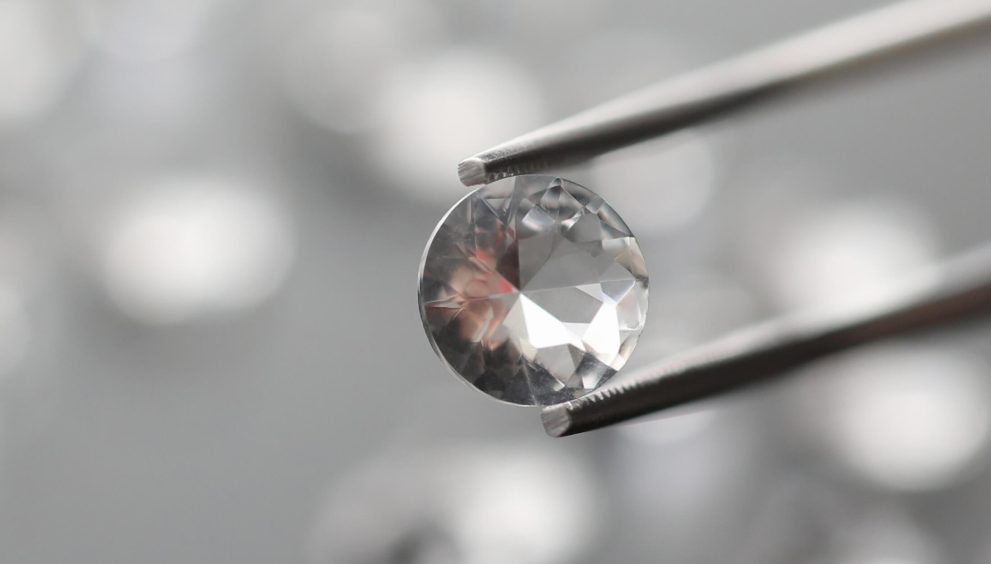Exploring the Factors That Determine Diamond Grading and Its Importance

The diamond grading process is intricate and entails the assessment of multiple elements to ascertain the grade and worth of a diamond.
The highly recognised grading system is primarily the 4Cs – cut, color, clarity, and carat weight. Each of these variables is essential to figure out the overall worth of a diamond.
It is important to enhance your understanding and knowledge on diamonds, whether you are seeking for a diamond accessories or merely aiming to broaden your expertise.
In this article @ Zik Natural Resources, we explore the insight into diamond grades and gain a more profound comprehension of the grading systems employed globally.
Evaluating The 4Cs of diamond grading
When evaluating the brilliance and worth of a diamond, professionals take into account four fundamental elements, widely referred to as the 4 Cs.
Each of these aspects enhances the general aesthetic appeal and attractiveness of a diamond.
- Cut: The term “cut” in a diamond, pertains to the value of its shaping and faceting. The diamond’s brightness and sparkle are influenced by its cut, as a well-cut diamond reflects lighting more efficiently. The GIA (Gemological Institute of America) evaluates the quality of diamond cuts using a rating The rounded excellent cut is often preferred, due to its remarkable brilliance and scintillation.
- Color : Although diamonds are commonly linked to transparency and colorlessness, they can exhibit a diverse range of colors, including white, yellow, brown, and even uncommon colours such as blue and pink. The GIA assesses the color of diamonds using a grading scale that ranges from D (colorlessness) to Z ( mild yellow or brown hues). Colorless diamonds are highly prized and sought after due to their capability to transmit the greatest quantity of light, resulting in enhanced brightness.
- Clarity : The clarity of a diamond pertains to the existence of any internal or exterior imperfections, referred to as blemishes and imperfections, respectfully. The GIA assesses the clarity of diamonds using a scale that spans from Flawless to Included. Flawless diamonds are exceptionally scarce and exhibit no discernible inclusions or imperfections when viewed under a 10 x magnification.
- Carat weight: specifically denotes the dimensions and mass of a diamond. A carat is equal to 200 milligrams. Typically, bigger diamonds possess greater value, although additional elements including cut, color, and clarity also exert a substantial influence on a diamond’s worth.
Subscribe to www.zikresources.com and share this valuable content
The Significance Of Diamond Grading
The process of diamond grading is of the utmost significance for various reasons:
- Quality : Diamond grading serves as an efficient way, of providing people with an impartial and uniform evaluation of a diamond’s quality. It gives assurance, when buying diamonds that fulfils a chosen criteria of excellence.
- Trust: The presence of an accredited and reputable body, such as the Gemological Institute of the United States of America in the diamond market fosters, reliability and trust, while ensuring openness regarding diamond transactions.
- Investment: When individuals buy diamonds as investments, it is crucial to have them graded, to evaluate their significant prospective value and the possibility of their value increasing over time. This makes diamonds appealing as a form of investment.
Buy Now ” Sustainable Extractive Sector Management”
Understanding And Interpreting Clarity Grades In Diamond Grading
Gaining a thorough understanding of the importance of diamond clarity grade, will provide you with the knowledge, you need to make, well-informed choices when choosing the ideal diamond.
- Diamonds graded as Flawless (FL) and Internally Flawless (IF) exhibit no detectable imperfections or flaws when viewed under 10x magnification. These items are extremely uncommon and greatly valued for their lack of impurities and clearness.
- Very, Very Slightly Included (VVS1/VVS2): VVS diamonds possess minuscule inclusions which are challenging to discern, even when viewed under 10x magnification. The products possess outstanding quality and provide amazing luminosity.
- VS1/VS2 diamonds have little inclusions that can be seen with 10x magnification, nevertheless are not readily noticeable without magnification. These diamonds have been regarded for their exceptional value and superior quality.
- Slightly Included (SI1/SI2): SI diamonds have discernible imperfections when viewed under 10x magnification, although they may appear visually clean to the human eye. They provide excellent value for individuals in search of diamonds with satisfactory clarity.
- Included (I1/I2/I3): Included diamonds exhibit noticeable impurities, that are apparent under 10x magnification, as well as to the unaided eye. Although they may be affordable, the clear properties of these items may influence their visual appeal and longevity.
Subscribe to www.zikresources.com for more valuable and educative content
In conclusion, diamond grading might exhibit differences in the various categories of grade. It is crucial to physically examine diamonds and get advice from professionals to guarantee you’re able to choose a diamond that fulfills your expectations.
It is crucial to emphasize that the carat weight of a diamond can not on its own, define its quality or attractiveness, when assessing clarity grades, it is crucial to take into account the diamond’s size, quantity, and nature of impurities.
Diamonds that have fewer and tiny imperfections are often more valuable than those that have more large or frequent imperfections.
By comprehending diamond grades, you can confidently discover the ideal diamond that will provide satisfaction and radiance to you for many years.
Contact www.zikresources.com for more information







